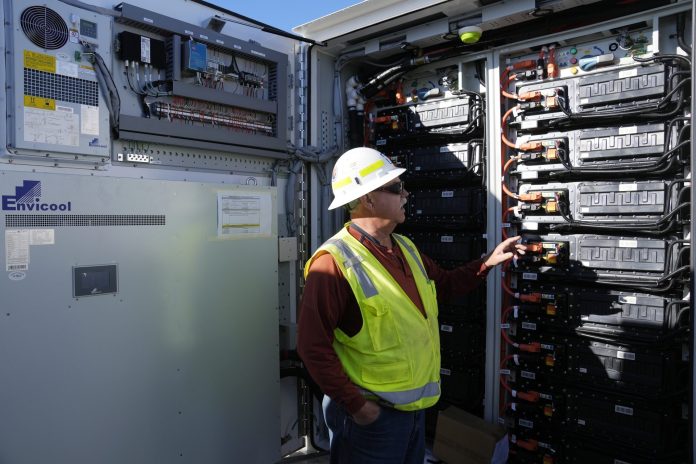
The years when electricity was always used the instant it was produced are ending and the new age of storing energy for peak usages is coming to the fore.
Permian Basin Petroleum Association President Ben Shepperd and Waco economist Ray Perryman say the time for ever-increasing storage has arrived with the development of highly sophisticated new batteries and other methods, some of them relatively simple but nonetheless promising.
“Storage for energy purposes in general has always been an important topic,” Shepperd said. “If you think about it the storage of oil in a barrel is very similar to the storage of electrons in a lithium-ion battery except that you can fully drain a barrel of oil and refill that barrel over and over again without losing capacity whereas with a battery, every time it’s drained you can only charge it back up to a reduced percentage of its full capacity.
“As energy demand worldwide continues, energy and power storage are perhaps more important today than they ever have been. Storage in today’s energy landscape can concern storage of a fuel like oil, natural gas or hydrogen that could ultimately be used to generate electric power, the storage of the electric power itself in batteries or even energy converted to thermal energy storage.”
Whether it is the storage of a fuel or the storage of power to help with grid reliability and electricity deliverability, Shepperd said, the issue is increasingly important.

“For wind and solar power to be truly reliable contributors to our energy grid, batteries are essential,” he said. “Batteries allow wind- and solar-produced electricity to be available when the wind isn’t blowing and the sun isn’t shining.
“However, four hours of power when generation wasn’t occurring was long seen to be the limit for grid storage batteries based on technology and economics. While recent gains have been made to push battery life further for less money, the May 2024 new tariffs from the Biden Administration could see a cooling effect on the development and utilization of these technologies in the United States largely because these resources are not currently developed at a high level domestically.”
While most people might key on the fact that the new tariffs, which won’t go into effect until 2026, saw dramatic increases of more than 50 percent for solar cell imports and roughly 100 percent for electric vehicles, Shepperd said, the tariffs on battery imports went from 7.5 percent to 25 percent for more than a 300-percent increase.
“So much of the supply chain for battery development is reliant on foreign imports, particularly from China as that country is the only supplier of the lithium-ion battery type that is the preference for grid storage,” he said. “The goal for the tariffs is to support an American-based battery industry, but that industry is currently nowhere near ready to compete with Chinese production and instead in the short term these tariffs will likely result in higher costs for the utilization of battery storage on the grid, which means higher electricity bills for every consumer.”
Perryman said the storage of power is a critical issue in ongoing efforts to address rapidly expanding energy demand while simultaneously addressing climate issues.
“Generally speaking, when you turn on a light or a television the electricity that you use is produced at the same instant,” Perryman said. “This fact poses significant issues for renewable sources.
“As a simple example the wind tends to blow the most in the spring and fall while electricity uses peak in the summer and winter, thus without storage capabilities substantial wind capacity may not be available when it is needed most.”
The economist said there are a number of directions in which energy storage research and development are going.

“One is improving batteries,” he said. “Newer batteries involving different materials are under development and breakthroughs indicate that improvements may occur in the not-too-distant future.
“Newer batteries will improve the energy stored by weight, time to charge and costs while also improving safety by reducing flammability. Disposal is an issue that must still be resolved.
“Energy storage research and development are ongoing in both the private and public sectors with federal involvement being particularly strong in the newest potential technologies where commercial viability is not yet established.”
In addition to batteries, Perryman said, other methods of energy storage are being explored like using gravity by pumping water into an upper reservoir when energy is abundant and then letting the water flow through turbines to generate electricity at night or when the wind isn’t blowing.
“Similar methods involve raising heavy blocks when electricity production is high and letting them go back down to generate power as needed,” he said. “Pressurizing air is another option being explored.
“Because key renewable sources such as wind and solar are by their very nature intermittent, there are strong market incentives to improve energy storage. Over the next few years I think we will see significant breakthroughs in batteries and other methods of storing energy.
“The world is going to need energy in substantially increasing quantities from a variety of sources like oil and gas, nuclear and renewables for decades to come and enhanced storage capabilities are an essential part of the mix.”



